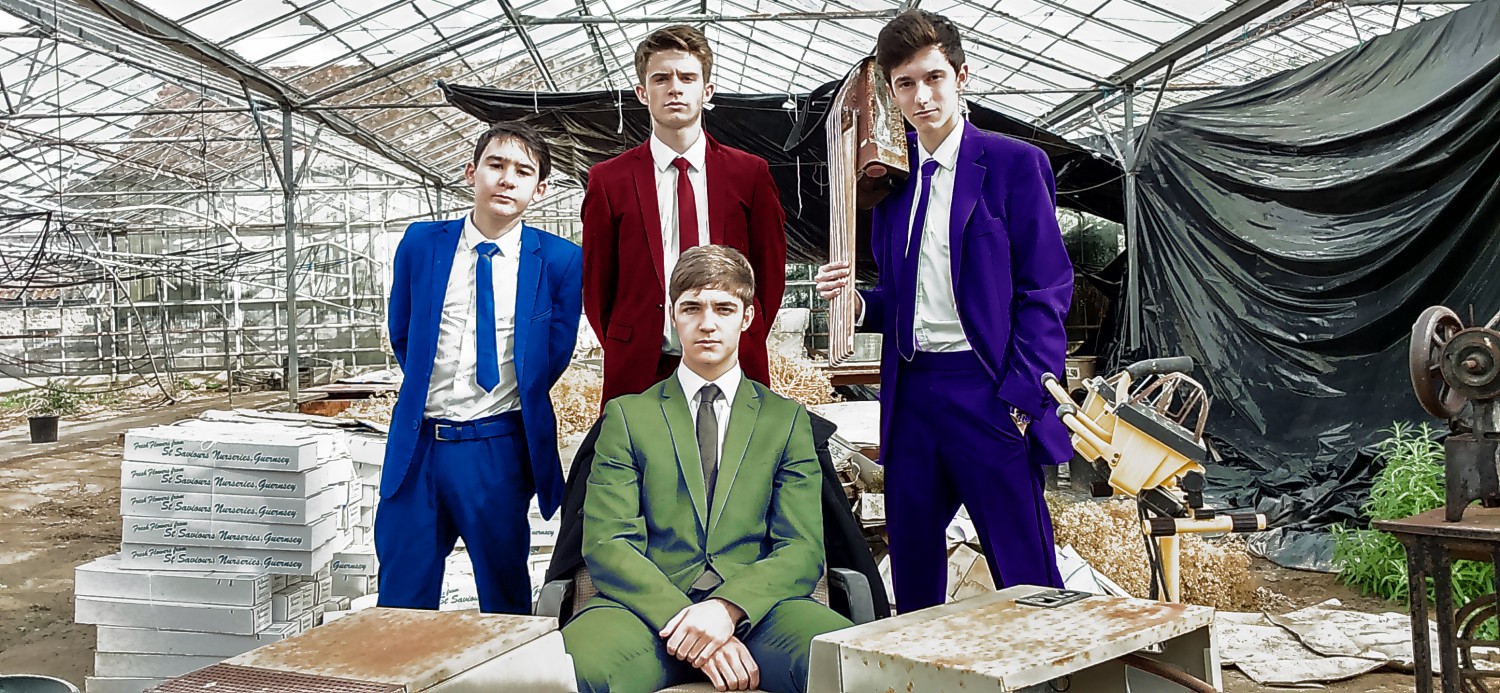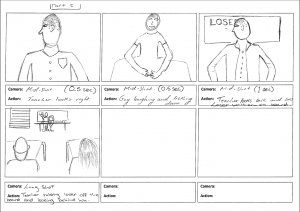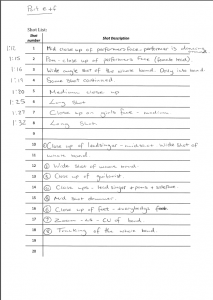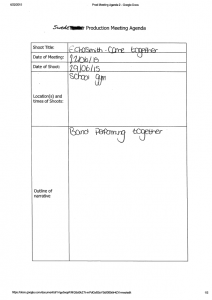The Swede – Come Together By Echosmith
Our first practical work for this course was to film a swede as a class. A swede is a shot for shot remake of an already existing media product, for our swede we chose to use Come Together by Echosmith. We will be filming both the narrative of the music video and the performance, However, the performance wont be filmed shot for shot as we are focusing more on the narrative being equal to the original music video.
This post is showing the journey from planning to the final product of a swede.
To see the music video we used in the swede watch the video below.
First off we, as a group, we had to watch the music video and study the narrative shot for shot. We were give two sections of small sections of the music video within a group of 4, we the split off into pairs and closely studied the section.
After watching the video closely we then re-watched the section of the video that was assigned to us, Section E 1:12 – 1:20, and we created an in depth storyboard for the section. On the storyboard we included a drawing of the shot, a description of the shot and type of shot and final the action which takes place during the shot.
To see the storyboard click the image below.
Next we watched the section again and this time created a shot list of all the performance sections within our section, we listed the type of shot it was and who was in the shot, we also added a time stamp of where the shot was. We then came together as a class and listed the 8 most important shots that we needed to cover as a group. For the performance we chose instead of filming shots for the duration that they are needed, we are filming the whole song from the angles needed giving a variety of moments to work with when editing. The 8 shots were then split among the groups, for my performance section I was give a dolly wide angle and a long shot with zooming.
To see the shot list click the image below.
Finally before filming the swede we needed to create production meeting agendas, one for the narrative and one for the performance. This was important as it prepares us for the day of shooting by telling us when we will being filming that section, who is needed and what props and costumes needed to be ready for that day.
To see the narrative production meeting agenda click the image on the left.
To see the narrative production meeting agenda click the image on the right.
The purpose of these documents is make sure that when we come to film the swede we are prepared as we possibly can, this means that on the filming day all shots go smoothly and according to plan. This in turn saves us time allowing us to focus more on other angles and shooting a shot more that once to make sure we have different shots to work with rather than having to film at a later date.
These documents were used to help us successfully film the narrative and performance for our section of the swede, we then edited the clips in Adobe Premiere Pro trying to match up the narrative as close to the original as possible, filling the time period we were given.
To see our section of the swede watch the video below.
To see the full class swede with all sections edited together watch the video below.
What lessons did you learn about planning and the use of Storyboards/Shot Lists and Production Meeting Agendas? Why are they important when out on shoot?
The planning documents are important as they keep us as a group on task. Should anybody be lost or unsure of what comes next we are able to refer to the documents in order to get back on track. The documents also helped us to perform our shoot efficiently saving us precious time. This meant we could film each section multiple times to guarantee that the shots we had were perfect for what we needed them for.
Target: Always keep these documents to hand during filming in order to aid our shoot.
What should the camera operator be doing whilst filming?
The camera operator should be concentrating on the framing of the shot, if one of the band members exits frame the camera operator must direct them back into frame. The camera operator should also be giving instructions of what they want the band to be doing, if not the band may stay stationary during the whole filming process and the shots would be boring.
Target: Always check if the framing is correct for the shot and that band members are in frame, when they are, give them instructions or actions to perform.
What lessons did you learn about directing people in front of the camera? What information do they need to know about their character / their performance style? How can the director get them to relax and have confidence in front of the camera in order to perform well?
The most important thing to do is too keep the actors and band members as calm as they can possibly be. One way to do this is to give as much information on their character as you can, by doing this the actor is able to empathize with the character and can perform as they would. If little to no information is provided then the actor will start to feel unsure of what to do and begin to panic.
Usually the actors reflect the feelings of the director, so if he is calm they are calm. It is important as a director to no be too calm as this could lead the actors to be too calm and not perform and just corpse. A level of strictness is required by the director to keep the actors in check and performing as they should.
Target: Give as much information about a character to the actor so they are prepared. Retain a degree of strictness when directing in order to keep your actors in order.
What lessons did you learn about filming the performance for your production?
It is important to film the action from as many angles as possible during a single run-through. It is difficult for actors to perform the same actions in the same place during a certain part of a song every time they perform, By filming from multiple angles the same actions are caught giving continuity to the performance. Filming 4-5 angles at the same time helps with editing. Also it helps to shoot a full run-through of the song rather than small sections, this makes the overall filming process easier.
Target: Shoot as many angles during each full run-through in order to capture as much action as possible.
What did you learn about editing and post-production?
From the editing and post production I found it is very important to have as much footage as you can possibly get, this helps as there are more options for shots during the performance when editing. If you don’t have enough footage and a variety of angles the performance can seem lacking and boring. A skill I have learnt from this task is lip syncing and how important it is in editing to get it right. Having footage slightly out of time leads to an unprofessional look and can be off putting.
Target: Gather as much footage and variety of angles as possible before editing the video, and get the lip syncing as perfect as possible.
What did you discover about the use of conventional Mise-En-Scene for music videos?
Mise-en-scene within a music video is heavily dependant on the genre of the music, from costume to lighting to the setting of the video, it all revolves around the genre of the music. A heavy metal music video would not have people in shorts a t-shirt and flip flop at the beach, but rather men in leather jackets with long hair in a dark environment or destroyed location.
Target: Match the Mise-en-scene with the genre of music which is being used for the music video, follow the conventions of the genre.




